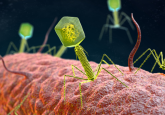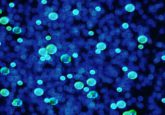Antibiotic-resistant slime: the problem with Pel

The mechanism by which Pseudomonas aeruginosa (P. aeruginosa) forms biofilms encased in an antibiotic-resistant slime in cystic fibrosis patients has been revealed. A recent study, led by Laura Jennings of the University of Michigan (MI, USA), has exposed the mechanism through which bacteria that infect the lungs of patients with cystic fibrosis can form a biofilm with a protective coating, which defends against antibiotics. The discovery could have dramatic implications for the treatment of cystic fibrosis patients. The heritable condition cystic fibrosis leads to the production of excessive volumes of thick mucus in the lungs. This renders the lungs vulnerable...
To view this content, please register now for access
Join our member community for FREE to access a collection of journal and online-only features, including:
- Exclusive access to educational videos, eBooks and insights into top BioTechniques journal articles
- The latest news and journal updates delivered straight to your inbox when you want it
- Personalized recommendations for the latest member-exclusive podcasts, interviews and expert opinions
- Priority registration to webinars, panel discussions and events
- Access to competitions and journal publication discounts, including 10% off open access fees when you sign up today!





